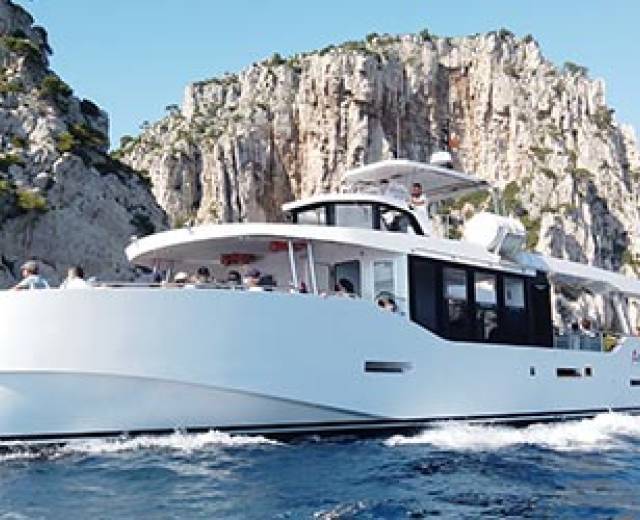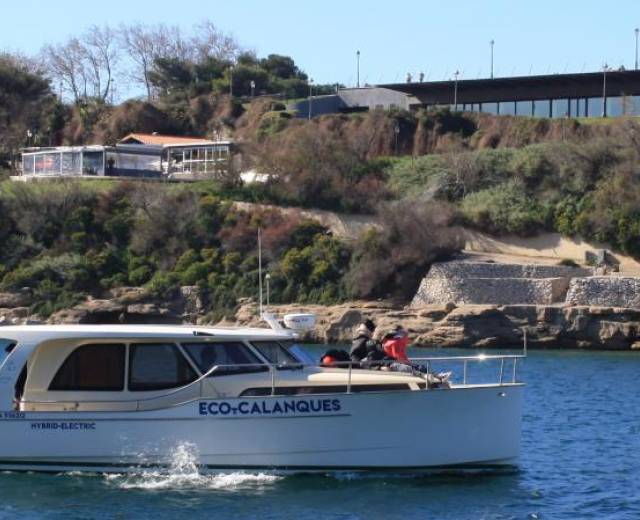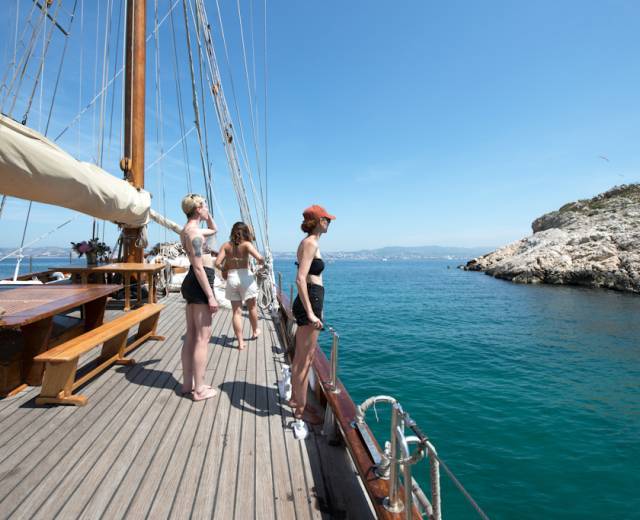
lieu-dit Grizac
48220 Le Pont-de-Montvert
France

lieu-dit Grizac
48220 Le Pont-de-Montvert
France

18 rue Emile Mussard
Grand Coude
97480 Saint-Joseph
Réunion
Chemin Notre Dame
Ile de Porquerolles
83400 Porquerolles
France
The Calanques form a landscape and natural environment that is found nowhere else in the world. Numerous plant and animal species have made their home here, and some of them can only be seen in the Calanques National Park. Throughout your walks, you will go from one sighting to another over often spectacular landscapes.
For nature lovers, the Calanques National Park offers you many sighting opportunities to savour the majestic beauty of its landscapes and the thriving life of its ecosystem.
Geology lovers will be fascinated by this very exceptional landscape with its mixture of limestone, puddingstone and karstic habitats. They will be able to marvel at the Soubeyranes cliffs, a mineralogy hotspot and some of the highest sea cliffs in Europe. Don't miss the exceptional viewpoints that you will have from the Route des Crêtes over these ochre giants.
One of the most emblematic species in the area is undoubtedly the Yellow-legged Gull, nicknamed "gabian" by the Provençal people. The Islands of Marseille are home to the largest French breeding colony of this coastal seabird. The National Park also claims a wide variety of reptiles, such as the Ocellated Lizard, whose average length of 80 centimetres makes it the largest lizard in Europe.
With its three lookout stations, the National Park offers unrivalled places to view the natural and cultural heritage of the Calanques. The Bec de l'Aigle lookout station is still in operation and even opens its doors to the public in June for the “Days of the Sea”.
Perched 109 metres above the calanque with the same name, the Callelongue Lookout Tower offers a panoramic view of the coastline. Built in 1863, it was used to watch for the arrival of potential invaders and to ensure communication with ships and other lookout towers. The Calanques National Park has undergone major restoration and security work on this site which had long been abandoned. While the inside is not open for visiting, you can take advantage of the viewpoint that has been set up.
An outstanding panoramic road, the D141, more commonly known as the "Route des Crêtes", links Cassis to La Ciotat by criss-crossing the Soubeyranes cliffs. It peaks at Cap Canaille and offers a multitude of spectacular viewpoints over the bays of Cassis and La Ciotat, and also over the limestone massif of the Calanques and the Riou archipelago. Inland, you will find rambling woods where many Stone Pines were planted in 1990 after devasting fires.
An outline of limestone off the coast of Marseille, the Frioul archipelago bristles with the harsh reliefs of its four islands: Pomègues, Ratonneau, If and Tiboulen. These islands shaped by the wind are the realm of extraordinarily shaped plants that have adapted to drought or saline conditions. There are common species such as Aleppo Pine or rosemary, but also others that can only be seen in this part of the National Park, such as the sand lily.
The location is also home to many bird species such as Cory’s Shearwater.

297 boulevard Alexandre Delabre
13008 Marseille
France
Avenue de Luminy
13009 Marseille
France

Sormiou
13000 Marseille
France

Sormiou
13000 Marseille
France

Cinéma Lumière
Place Evariste Gras
13600 La Ciotat
France

Cinéma Lumière
Place Evariste Gras
13600 La Ciotat
France

Vieux-Port
13000 Marseille
France

Vieux-Port
13000 Marseille
France

Quai d'honneur du Vieux Port
13002 Marseille
France

Terminus ligne 20
Callelongue
13000 Marseille 8e Arrondissement
France

Terminus ligne 22
Quartier des Baumettes
13008 Marseille 8e Arrondissement
France
Quai des belges
13001 Marseille
France

Quai d'honneur du Vieux Port (porte 2)
13002 Marseille
France